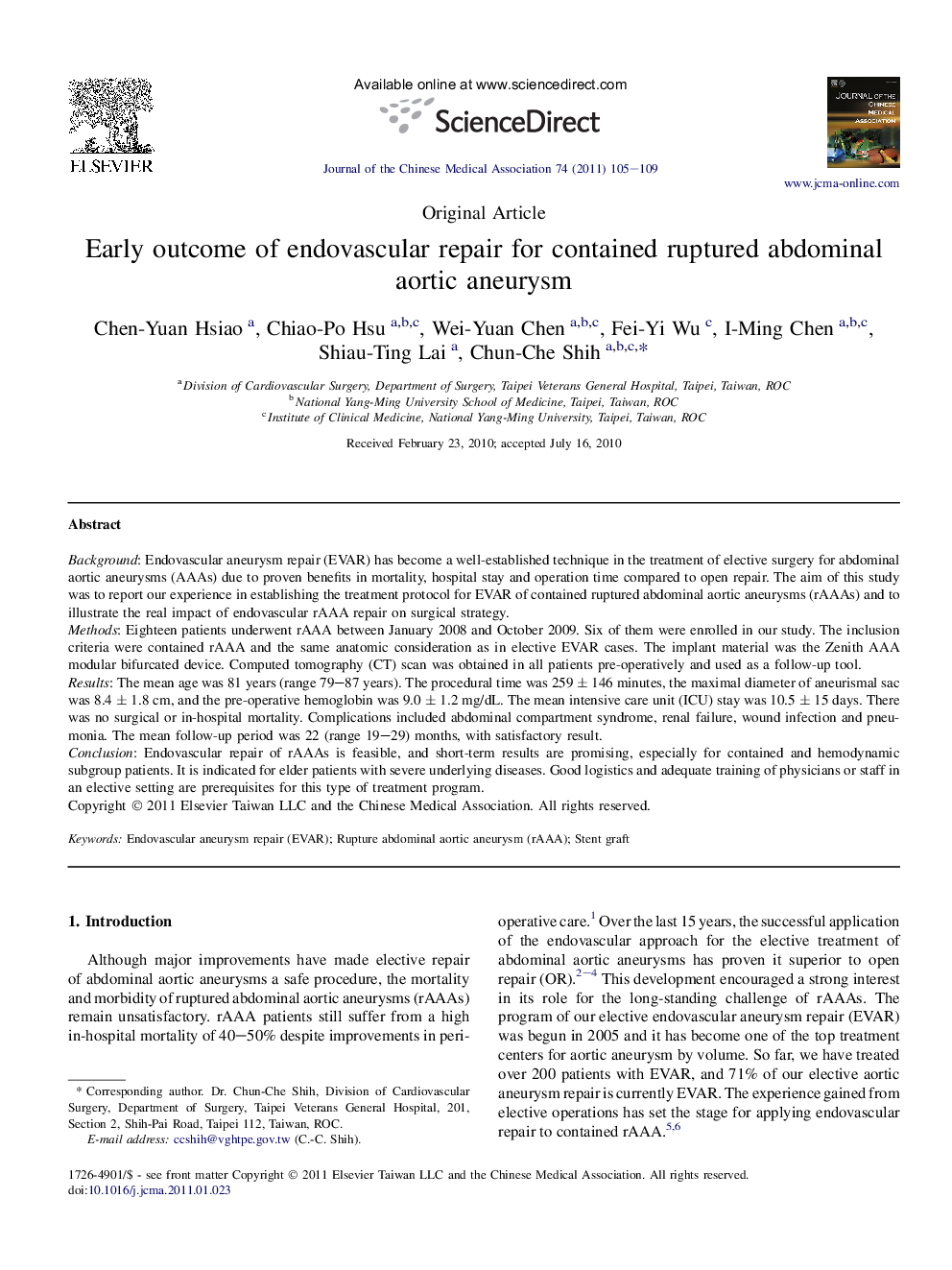| Article ID | Journal | Published Year | Pages | File Type |
|---|---|---|---|---|
| 3476741 | Journal of the Chinese Medical Association | 2011 | 5 Pages |
BackgroundEndovascular aneurysm repair (EVAR) has become a well-established technique in the treatment of elective surgery for abdominal aortic aneurysms (AAAs) due to proven benefits in mortality, hospital stay and operation time compared to open repair. The aim of this study was to report our experience in establishing the treatment protocol for EVAR of contained ruptured abdominal aortic aneurysms (rAAAs) and to illustrate the real impact of endovascular rAAA repair on surgical strategy.MethodsEighteen patients underwent AAA between January 2008 and October 2009. Six of them were enrolled in our study. The inclusion criteria were contained rAAA and the same anatomic consideration as in elective EVAR cases. The implant material was the Zenith AAA modular bifurcated device. Computed tomography (CT) scan was obtained in all patients pre-operatively and used as a follow-up tool.ResultsThe mean age was 81 years (range 79–87 years). The procedural time was 259 ± 146 minutes, the maximal diameter of aneurismal sac was 8.4 ± 1.8 cm, and the pre-operative hemoglobin was 9.0 ± 1.2 mg/dL. The mean intensive care unit (ICU) stay was 10.5 ± 15 days. There was no surgical or in-hospital mortality. Complications included abdominal compartment syndrome, renal failure, wound infection and pneumonia. The mean follow-up period was 22 (range 19–29) months, with satisfactory result.ConclusionEndovascular repair of rAAAs is feasible, and short-term results are promising, especially for contained and hemodynamic subgroup patients. It is indicated for elder patients with severe underlying diseases. Good logistics and adequate training of physicians or staff in an elective setting are prerequisites for this type of treatment program.
